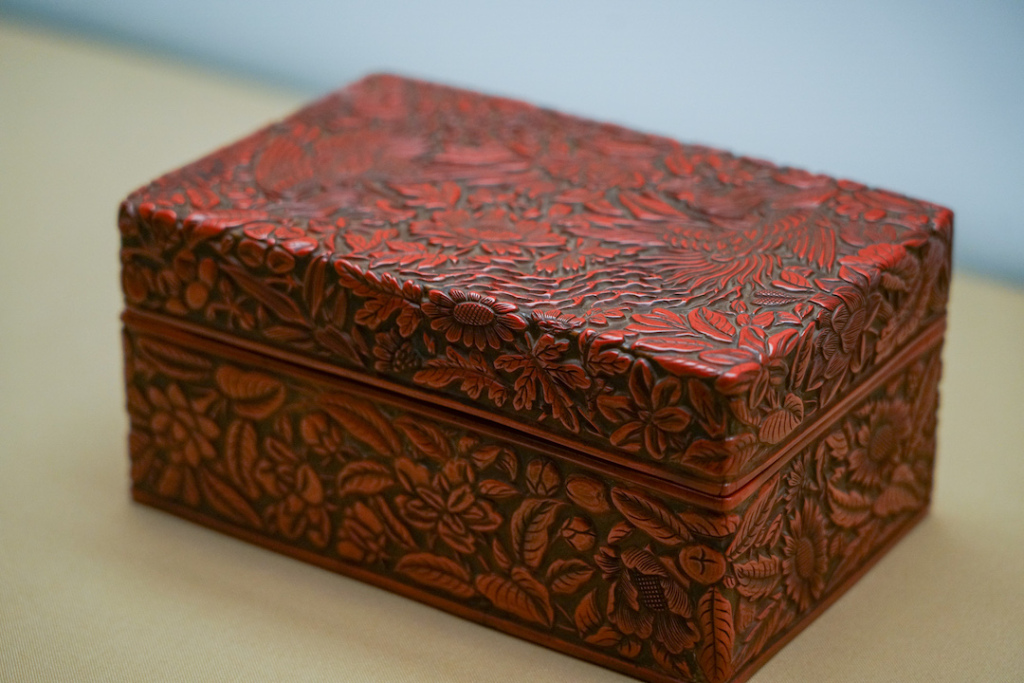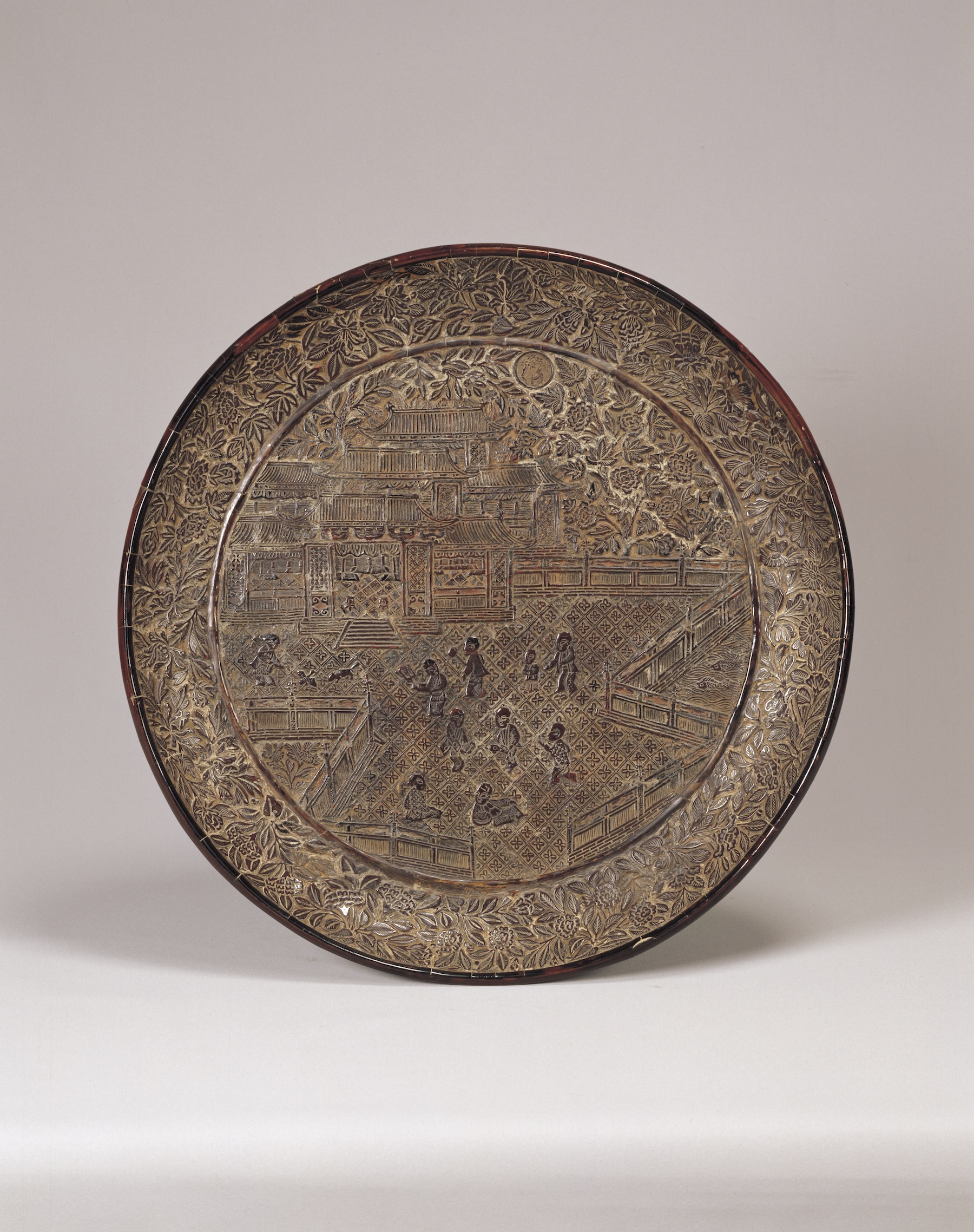
China was one of the earliest countries in the world to use lacquerware, and its long-standing lacquerware craftsmanship and culture also spread to and influenced neighboring Japan. Japan still retains many rare Chinese lacquerware pieces from the Song and Yuan dynasties.
The Paper reports that on September 26th, the Shanghai Museum and the Tokyo National Museum jointly presented the exhibition "Red and Green Competing for Beauty: Treasures of Lacquerware from the Song, Yuan, and Ming Dynasties," which opened at the Shanghai Museum's People's Square location. The exhibition systematically explored the artistic achievements of Chinese lacquerware through 127 artifacts. Among the exhibits, 112 were from Japanese collections, approximately half of which were rare Song and Yuan dynasty lacquerware treasures, a key highlight of the exhibition.
The pinnacle of Chinese lacquerware craftsmanship
China is one of the earliest countries in the world to use lacquerware. Lacquerware craftsmanship has continuously improved over time, and in the Song and Yuan dynasties, a variety of lacquerware techniques flourished, including carved lacquer, filled lacquer, inlaid gold, and mother-of-pearl. This exhibition features 127 pieces, showcasing exquisite Chinese lacquerware from renowned Japanese collections such as the Tokyo National Museum, the Nezu Museum, the Idemitsu Museum of Art, and the Kyushu National Museum, as well as unearthed Song and Yuan dynasty lacquerware from domestic museum collections.

Rectangular box with red carved flower and bird patterns, Southern Song Dynasty (13th century AD), Collection of Tokyo National Museum, Japan
The exhibition is divided into six themes, based on the craftsmanship of lacquerware: Pure Shadows, Heavy Fragrances, Splendor of Gold, Brilliant Colors, Ancient Charms, and Returning Home. The exhibits, sourced from Japanese collections, are many masterpieces of lacquerware with a long and established history. These include a Southern Song Dynasty lacquer-red rectangular box with phoenix and peony patterns, recorded in the Imperial Documents Record; a Southern Song Dynasty lacquer-red rectangular plate with double dragons and floral designs; a Yuan Dynasty black lacquer diamond-shaped plate with mother-of-pearl and seawater dragon patterns; and a sutra box with gold-inlaid cloud and phoenix patterns. Many of these are designated Important Cultural Properties of Japan and are significant examples of representative artifacts in the history of Chinese lacquerware. The exhibition also features two copies of the 400th-anniversary "髹饰錄" (Record of Lacquerware), a text lost in China and a crucial work on the history of Chinese lacquerware.

Exhibition site: Tokugawa copy of "Lacquer Record", Edo period, 18th-19th century (original work dated 1625, the year of the Tianqi Emperor), Tokyo National Museum
One example, a Yuan Dynasty black lacquer and mother-of-pearl figure-shaped box, now in the collection of the Idemitsu Museum of Art in Japan, features a lid depicting the emperor and his empress enjoying court music accompanied by officials and attendants. The rich, sparsely arranged patterns vividly capture the opulence of the imperial court, and the box is considered a unique and rare Yuan Dynasty artifact of its kind.

Exhibition site Yuan Dynasty black lacquer mother-of-pearl figure diamond-shaped box, collection of the Idemitsu Museum of Art, Japan
"This exhibit is an important cultural asset of Japan. It is large in size, beautiful in shape, and has intricate patterns. It can be regarded as a work representing the best level of Chinese lacquerware mother-of-pearl craftsmanship. It will only be on display for two weeks in this exhibition and is a rare exhibit." Sun Feng, a researcher at the Shanghai Museum, told The Paper.

Black lacquer mother-of-pearl diamond-shaped plate with sea dragon pattern, collection of Tokyo National Museum, Japan
The adjacent display case features a "Black Lacquer Mother-of-Pearl Diamond-Shaped Plate with Sea Dragon Design," also an Important Cultural Property of Japan, housed in the Tokyo National Museum. The plate is in the shape of an eight-petal diamond, with the motif depicted in varying shades of mother-of-pearl. The rim features floral motifs in mother-of-pearl. The center of the plate is inlaid with mother-of-pearl, depicting a five-clawed dragon surging over surging waves. The background is adorned with delicately colored shells adorned with cloud patterns, rocks, and trees, with fine, thread-like shell flakes depicting the rolling waves and highlighting the dragon's majestic form. "This exhibit boasts a thin body, sharp diamond-shaped petals, and exquisite mother-of-pearl craftsmanship. It is a world-renowned masterpiece of thin mother-of-pearl inlay from the Yuan Dynasty."

A sutra box with gold-inlaid cloud and phoenix patterns at the exhibition
A red lacquer sunflower-shaped plate from the Southern Song Dynasty has an elegant shape, similar to the shapes of Ding kiln and Ru kiln porcelains of the same period, highlighting the Song people's aesthetic taste for simplicity.

Red lacquer sunflower-shaped plate, Southern Song Dynasty, 13th century, Tokyo National Museum collection
Wandering through the exhibition hall, one can see representative masterpieces of different lacquerware techniques, from plain lacquerware to red lacquerware, black lacquerware, colored lacquerware, and glittering mother-of-pearl lacquerware... The works are dazzling and one is impressed by the outstanding ingenuity of the skilled craftsmen of the Song, Yuan, and Ming dynasties in China.
Why has Japan preserved so many precious Chinese lacquerware from the Song and Yuan dynasties?
When talking about lacquerware, people usually think of Japan and its exquisite Maki-e technique. Chinese people seem to have forgotten about Chinese lacquerware.
According to Sun Feng, the craftsmanship of Chinese lacquerware is actually no less than that of Chinese ceramics, calligraphy, bronze, etc. However, lacquerware is made of wood and is not easy to preserve. As time goes by, the number of handed-down lacquerware preserved in China is very small. There are only a few handed-down Song Dynasty lacquerware in state-owned collections such as the Palace Museum, so it is particularly precious.

A round plate with a black carved figure in a pavilion, Southern Song Dynasty, 12th-13th century, from the collection of the Tokyo National Museum.
Since the Tang Dynasty, along with cultural exchanges, Chinese lacquerware that made its way to Japan has become a treasure sought after by the royal family and aristocracy. While lacquerware was a common commodity in China, Japan, a country that has long admired Chinese culture, saw lacquerware as a foreign product and became a social trend. Imperial families, nobles, and temples treasured and carefully preserved it. Consequently, Japan has preserved a large number of precious Chinese lacquerware from the Song and Yuan dynasties, which served as models for emulation of later lacquerware craftsmanship.
"It can be said that lacquerware has penetrated into the aesthetic consciousness and value system of the Japanese. Japan's lacquerware craftsmanship should be said to be developed on the basis of Chinese lacquerware technology and in accordance with their own aesthetic system." Sun Feng said that the reason why the Shanghai Museum held this exhibition and brought together Chinese lacquerware treasures collected in Japan was to let the audience see the heights reached by China's lacquerware art achievements.

Exhibition site
The seeds of the exhibition were sown long ago
Looking at the history of the development of Japanese lacquerware, Chinese lacquerware has profoundly influenced Japan's Maki-e craft, and at the same time, it has in turn influenced China's lacquerware craft. The exhibition presents the cultural exchange and mutual learning between China and Japan.
Makoto Fujiwara, director of the Tokyo National Museum, who traveled from Japan specifically to attend the exhibition's opening, said this was his second visit to Shanghai. His first visit was to the Suzhou Museum, where he landed in Shanghai and changed trains. Today, he immediately rushed to the Shanghai Museum's exhibition hall after landing at noon. He only had a fleeting glimpse of Shanghai, but it left a deep impression of its prosperity. "Chinese lacquerware has had a profound influence on Japan," Fujiwara said. "Since ancient times, Japan has greatly admired and accepted Chinese culture, while also cultivating its own culture and aesthetics."

Exhibition site
The exhibition showcases Chinese lacquerware from collections of Japanese museums, art galleries, and temples, including some of the world's rarest pieces from the Song and Yuan dynasties, many of which are now rarely seen in China. "I hope that through this exhibition, Chinese audiences will be able to appreciate these remarkable pieces originally made in China and gain a deeper understanding of traditional Chinese art. This is one of the reasons we collaborated on this exhibition," said Makoto Fujiwara.
Chu Xiaobo, director of the Shanghai Museum, said, "The return of these treasures, which have traveled across vast oceans and resided in Japan for centuries, brings not only an artistic feast but also a heartfelt reunion of the bloodline of civilizations."
It is reported that this exhibition is the second collaboration between the Shanghai Museum and the Tokyo National Museum of Japan following the "China-Japan Calligraphy Treasures Exhibition" in 2006 and the "Millennium Ink and Brush - Exhibition of Tang, Song and Yuan Dynasty Paintings from Japan and China" in 2010.

Exhibition site
Sun Feng explained that this exhibition, showcasing rare and exceptional lacquerware from the Song, Yuan, and Ming dynasties in Japan, is a rare and challenging one, thanks to the long-standing relationship between the Shanghai Museum and the Tokyo National Museum. "This exhibition has been in the works for a long time, dating back to the time of Director Wang Qingzheng. He knew that Mr. Yasuhiro Nishioka of the Tokyo National Museum (former Deputy Director and curator of this exhibition) was an expert in Chinese lacquerware, and he commissioned him to bring these fine pieces to China. However, the actual preparation for the exhibition took approximately six years."
It can be said that although the exhibition is now open, the seeds of friendship between the Shanghai Museum and the Tokyo National Museum, and of cultural exchanges between China and Japan, were sown long ago.
The exhibition is free and open to the public and will remain open until November 23, 2025.


